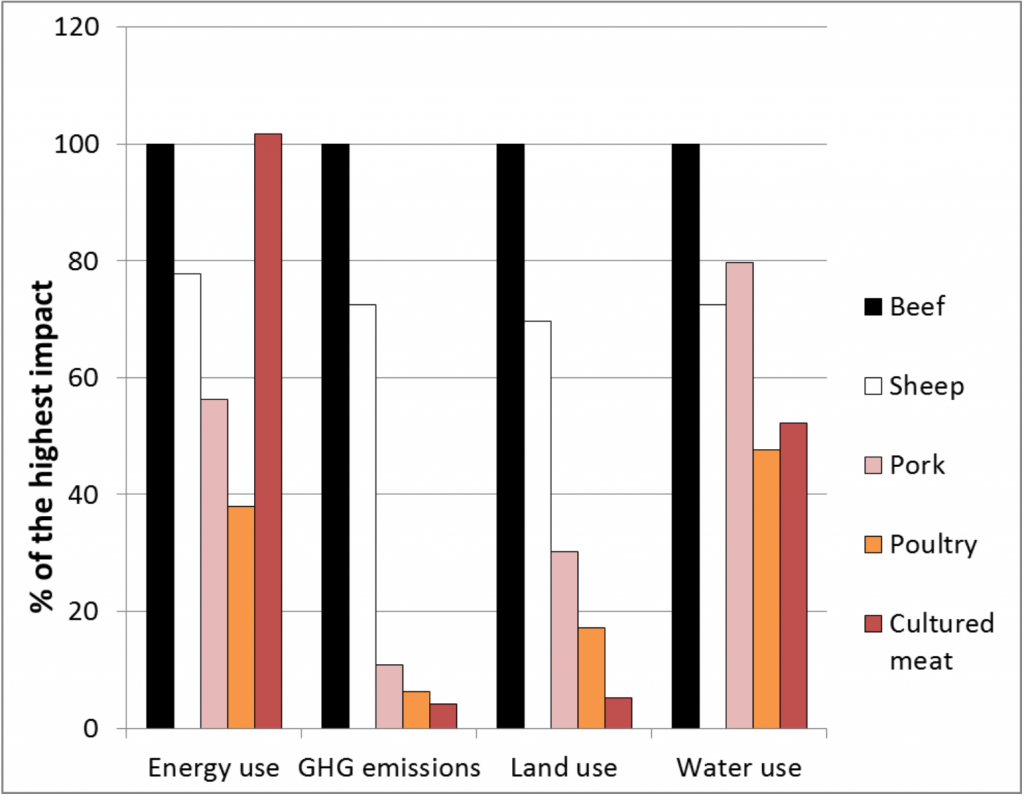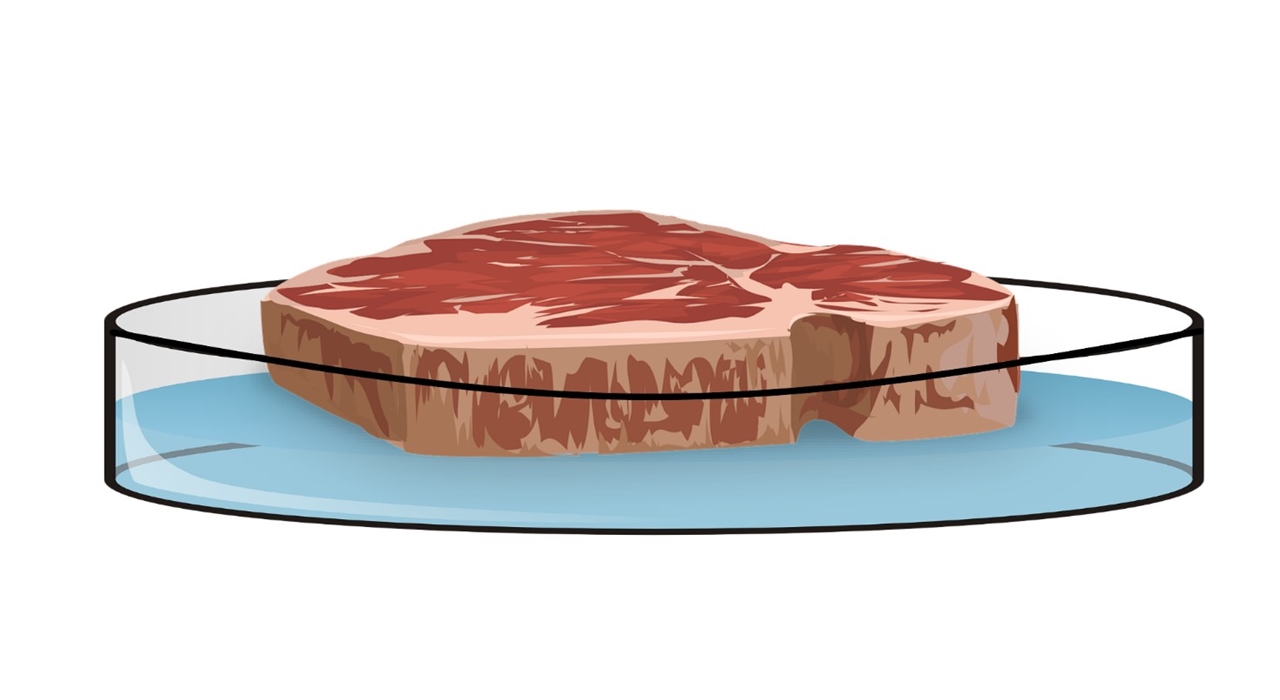Consider the cell. Consider the sell.
What considerations must we have of a future food system as cultured meat enters the field? As the hype, technology, and industry around cultured meat grows (pun intended), questions about how it may impact the future of the food system loom just as large.
Far be it from me to further explain to readers the ominous and anxiety-inducing problems that face humanity. Rising temperatures inducing rampant drought and unyielding storms. Wildfires and biodiversity loss from environmental damage and expansion of agriculture. Simultaneous destruction of ecosystems and natural resource depletion. Ever more humans to feed and increased socio-economic pressures of a world squeezed in a vice between planetary boundaries and productivist paradigms: the cells and the sells.
In the emerging field of cellular agriculture some posit lab-grown, or cultured meat will be the answer to these problems of a precariously (im)balanced food system. Just as renewable energy technologies have expanded to lessen our dependence on coal, sustainable alt-protein technologies may lessen our increasing dependence on industrial livestock farming.
A new kind of meat (legally and biologically) where animal muscle cells are cultivated in labs, no animal is raised from hutch to slaughter, and no farm is used, cellular agriculture will change the rules of the future food system. Considering the cell, the associated land, water, and feed that goes into traditional livestock production (as well as the farms) are likely much more than for cultured meat grown on nutrient mediums. Further, farms could repurpose or restore existing lands used to grow the, mostly, corn and soy for livestock feeds.
Still in research stages of adolescence for mass production, environmental life cycle analysis has shown the potential of cultured meat to reduce land use, GHG emissions, and water use when compared per unit of energy produced with traditional agriculture (see Figure 1). Further, human health and animal welfare issues could be addressed if livestock are not grown with an industrial dependence on antibiotics leading to antibiotic resistance and confined animal feeding operations.

When most research is telling us to move toward plant-based diets, meat consumption and production has been on the rise. Additionally, challenges of food security and food system sustainability further deepen the quagmire, complex future of reducing meat intake while still meeting socio-cultural demand for meat and animal products. So, let’s hypothesize a few questions for the future of a food system with cultured meat, and examine some areas of inquiry in an uncharted future…
What conditions and considerations are needed in the food system for implementing cultured meat in a sustainable future?
Uncertain food system activities
Cultured meat is essentially a food product. Products of cellular agriculture would not be grown on farms in any recognizable way of the present, but farmers may have bioreactors for cellular agriculture. Farms may be abuzz with questions about what changes to agricultural activities would ensue from an increase, or even entire take over, of lab-grown meat in the diet.
How would our crop production change if there was no more feed going to livestock? How would the resilience of food systems to environmental change be improved if we were not consuming animals grown in fields; would there be a negative impact on systemic resilience due to loss of animals or an increase due to the ability to produce meat (protein) regardless of the climate/weather conditions? How would labor productivity change? How would the role of the farmers change (or disappear)?
On the consumer side, how will eaters perceive the quality of the cultured meat? Will the demanded quantity change at all as a coveted or repugnant product? What diversity will be allowed for with the possibility of being able to create meat exactly, creatively as desired (e.g. origami meat, meat flowers, meat yarns)?
With food loss and waste being another of our great food systems challenges, would we reduce on farm losses from feeds grown for livestock? Could we close the loop on energy wasted by capturing and using biogas from other processes? Would retail and transportation losses of meat products be reduced if we could grow meat anywhere and source it locally? With households purchasing cultured meats, will there be higher values placed on these, reducing the food wasted post-plate?
Considering the sell, a novel food product would, of course, also have an impact on processing and trade. New packaging would enclose a product that would be marketed and sold in retail stores. Would these processes and packages reflect a future of more eco-friendly materials and flows, or further contribute to the newfangled marketing ploys of greenwashing products? Would transportation change to incorporate shorter supply chains if meat could be grown next door to urban markets instead of out in rural farmlands?
Other systemic considerations (in brief)
Due to space and (respected) attention span limitations, I will not expound the laundry list of other systemic considerations that could be posed as questions here. In lieu of detailed discussions, I will just ask readers to ponder for themselves the possible, sufficient, and necessary future conditions in a world with cultured meat around environmental changes, adjustments to interventions and policies, impacts on food and nutrition security, evolving dynamics of nutritional health and wellbeing, and, finally, associated sociocultural values shifts.
Finally then, here is a question that is all but unavoidable: What will the impact be on the rights of local people to develop and maintain their own capacity to grow meat? Could we ethically provide cultured meat for sustaining the future projected population increase in a way that respects cultural and productive diversity? Recognizing some potential of technology to influence food sovereignty, will cultured meat meet necessary preconditions to food security and a sustainable food system?
All of these queries, though, while sincere, obviously require much larger and more abstract investigations of the future of the food system. I have left readers with more questions than answers, but in leading us forward into a deeper, complex discussion, I want to return to the idea that we have the cells and the sells (but also more!) to consider in the future of our food system. The farms and forks, people and places, cultures and cuisines, environments and ecosystems…it will not only be about growing and selling meat cells, but also eating less meat, distributing food more equitably, and more collaborative research and innovation to step toward solutions to dauting food systems issues facing humanity.
Rachel Mazac
Rachel Mazac is a PhD student in Interdisciplinary Environmental Sciences and part of the Future Sustainable Food Systems research group at the University of Helsinki. Her research focuses on future sustainable dietary changes using food systems thinking to understand the subsequent impacts on the environment, nutrition security, and interacting climate change pressures.
References and further reading
Tuomisto, H. L., & Teixeira de Mattos, M. J. (2011). Environmental impacts of cultured meat production. Environmental science & technology, 45(14), 6117-6123.
Post, M. J. (2012). Cultured meat from stem cells: Challenges and prospects. Meat science, 92(3), 297-301.
Figure 1. from Tuomisto, H. L., Ellis, M. J., & Haastrup, P. (2014, October). Environmental impacts of cultured meat: alternative production scenarios. In Proceedings of the 9th international conference on life cycle assessment in the agri-food sector (pp. 8-10).
Photo constructed by Rachel Mazac from illustrations available on pixabay.com

